
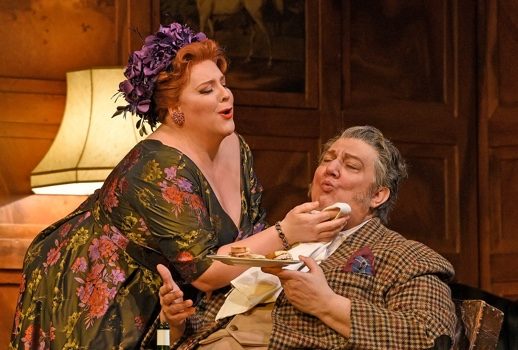
Equally at home in the tragic roles, Maestri cuts an impressive vocal and theatrical presence as well when he transforms into more imposing, even menacing characters like Scarpia, Alfio, Rigoletto, Gerard, and Amonasro.
What astonishes me about this singer’s artistry is how he pairs his beautiful, generous baritone voice with an ability to intimately marry vocal phrases to the text and the score.
If I were asked to create a list of my favorite contemporary singers, Ambrogio would undoubtedly come close to the top for how he has rekindled my love for Italy’s greatest operas.
In the grand tradition of naming dishes after great musicians and singers, I’d like to create a pasta dish in honor of Ambrogio’s art.
Ambrogio is known just as much for his love of food as he is for his career in opera. One can find him demonstrating one of many risotto recipes from his homeland on YouTube. As he is a maestro of the art of making risotto, I will opt to create a very different kind of dish—a meat-stuffed pasta that I will call Ravioli all’Ambrogio Maestri.
The dish takes inspiration from the many meat stuffed ravioli dishes one can find in New York’s (or for that matter, any other great city’s) fine Italian restaurants.
Here, I use beef cheeks (a meltingly tender and gelatinous stewing cut) as the basis for the ravioli. The sauce is a winey and complex concoction reduced from the braising fluids. To cut the richness of the dish, I’ve included a gremolata at the end.
The resulting dish to me is the gustatory incarnation of Ambrogio’s voice—oh so hearty, oh so robust, Italianate, but with a delicate lightness, a chiaro that makes his take on the great roles so magical.
Thank you for your artistry Ambrogio! I hope this ravioli lives up to the reputation of your art. And lastly, I hope we can make risotto and sing Italian songs on the piano together someday!
Note: I’ve also included a few clips to provide a cooking playlist throughout this multilayered dish’s many steps of preparation.
Ravioli all’Ambrogio Maestri
Ravioli dough:
250 g 00 Flour or any regular wheat flour (unbleached all purpose is fine too)
150 g fine semolina flour
4 large whole eggs
Combine flours in a bowl (I like adding a bit of semolina due to the texture it creates) and make a mound on a wooden board. Use your hands to create a shallow well in the center. Crack the eggs into the well (one of the eggs I used for this recipe had a double yolk).
Use a fork to slowly beat the eggs, drawing flour gently into the liquid mixture until a fairly sticky dough is formed.
Knead the dough for 7-10 minutes until smooth. The dough should spring back slightly when sufficiently kneaded.
Gather the dough into a disc, wrap well in plastic, and allow to rest in the refrigerator for at least 1 hour.
You need a bit of punch in your music to make that dough smooth.
Stewed Beef for Filling:
4 tbsp. olive oil
2.5 lbs. beef cheeks, beef shanks, or any tough, gelatinous cut of meat
1 yellow onion, minced
3 carrots, minced fine
1 medium fennel bulb, minced
5 cloves garlic, minced
1 32 oz. can San Marzano tomatoes, divided in half
1 cup Pinot grigio
1 bay leaf
2 sprigs thyme
1 sprig rosemary
Salt and pepper
Parmesan rind (optional)
1 tbsp. red wine vinegar
The stewed beef is the heart of this ravioli dish. For my dish, I used beef cheeks—an inexpensive, somewhat tough cut of meat that turns tender and gelatinous when braised for hours.
You can find this cut in many well-stocked grocery stores or butchers. I live in farming country, so I can always call my local butcher to save me a few cheeks during the slaughter process.
If you can’t find beef cheeks, feel free to substitute a cut like shank, ox tail, or short ribs.
Season beef with salt and pepper and sear until brown. When brown, set the beef aside on a plate.
Sautee the minced onion, carrot, and fennel in the fat until the alliums are soft and somewhat translucent. About 7-10 minutes. Add the minced garlic. Sautee 1 minute.
Return the beef to the pot. Add HALF of the can of tomatoes, the wine, the herbs, and salt and pepper to taste. Add the parmesan rind if musing.
Bring to a boil, and simmer for 2-3 hours when using a conventional stove. I placed all of the ingredients in a pressure cooker (Instant Pot) and finished everything within 60 minutes.
Act 2 of Falstaff is great sauce making music.
Filling:
Stewed beef4 oz. porcini mushrooms, soaked in hot water until soft, then finely minced
¾ cup parmegiano reggiano, grated (optional)
Remove the stewed beef from the braising liquid. Shred (or place in a food processor to create a paste). The picture below shows the shredded version. I prefer the paste version, as it yields a smoother, more homogeneous bite. Add the mushrooms.
Fold in the cheese (optional).
Sauce:
For the sauce, add the other half of the can of tomatoes and reduce the contents of the braising liquid in half. Use an immersion blender to puree the vegetables in the pot, and add the red wine vinegar. Season to taste and keep warm.
This step is short. Perfect for a villainous Verdi scene.
Assembly of the Raviolis:
The longest part of the past making process involves the shaping of the ravioli. Take your dough, divide into quarters or eights, and pass through a pasta roller.
If your pasta roller has 10 settings for thickness, I usually like to use 6 or 7 for ravioli. It shouldn’t be too thin, otherwise your dough will tear.
Distribute the meat filling within a 4-inch square of dough if making triangle raviolis (1 tbsp is good for this geometry). You can also make agnolotti type shapes, or things that resemble dumplings.
Just make sure the whole pasta is sealed, otherwise your filling will spill out (or boiling salt water will seep in and create an insipid tasting dish).
Brush the edges of your geometry with a bit of water, and seal tightly. Dust with a little flour to prevent sticking.
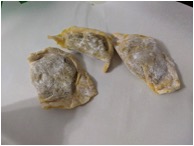
As this process can be time consuming, you should go ahead and enjoy an entire act of Don Pasquale with the loveliest Feola and the great Maestri.
Finishing the raviolis (for 20-24 raviolis, good for 4 people):
4 tbsp. butter
1 shallot, minced fine
Melt the butter in a skillet, and brown. Add shallot and cook until lightly caramelized. You can finish this step before boiling the pasta. Add the boiled and drained pasta to the pan and toss lightly in the butter mixture to coat.
Gremolata:
1 cup finely minced Italian Parsley
Grated zest of 1 lemon
1 clove garlic, minced finely
Salt and Pepper to Taste
Gremolata lightens the richness of this dish.
To plate: spoon sauce into the center of a plate. Mound 5-6 raviolis attractively. Drizzle more of the sauce on top. Sprinkle with gremolata.
Buon Appetito!
Photos: Photo: Karen Almond / Met Opera (Maestri); Christian Ocier (Ravioli).














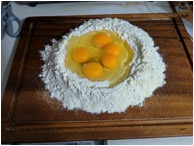
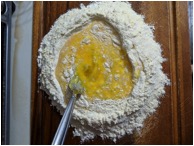
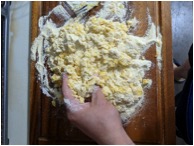
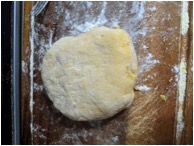
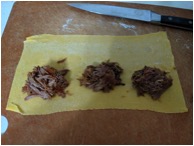
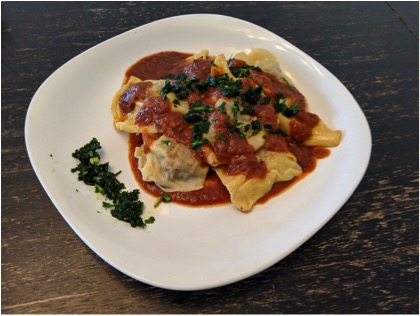









Comments